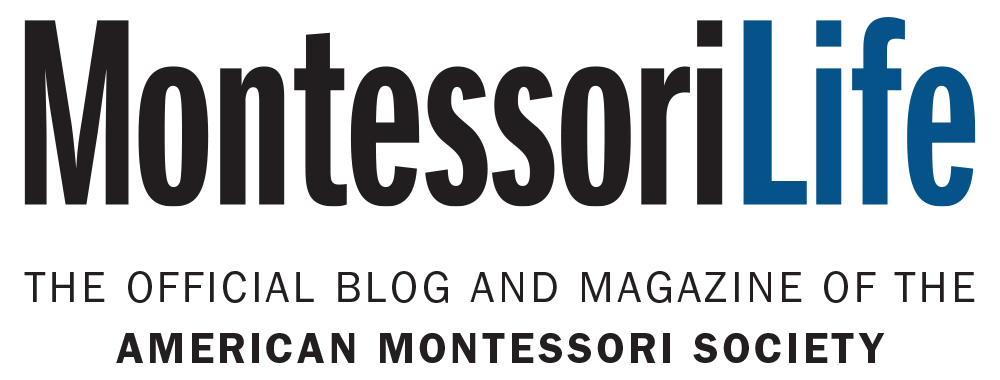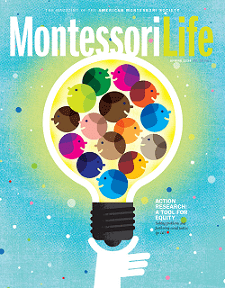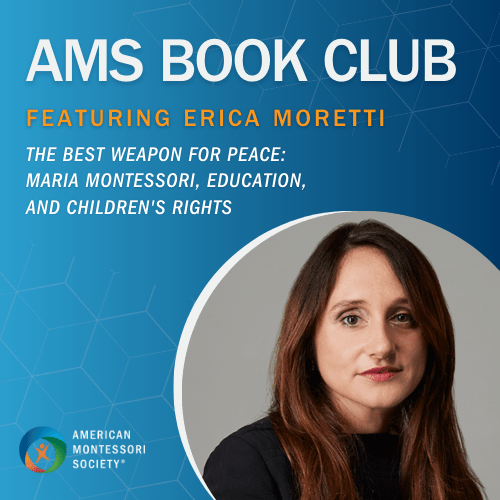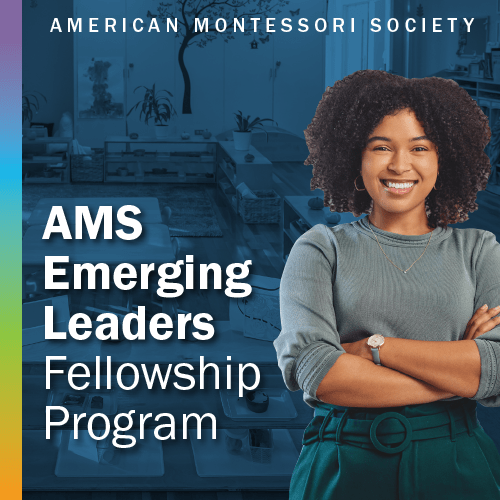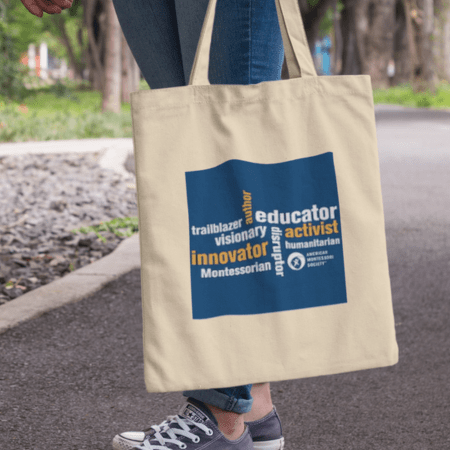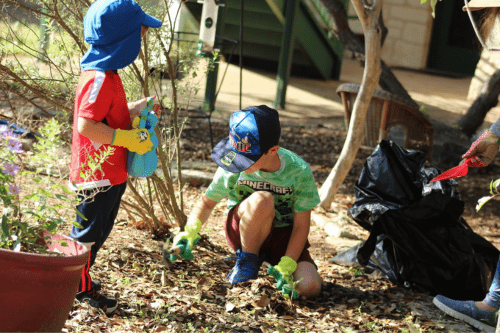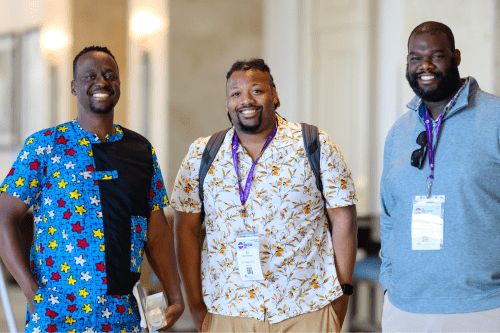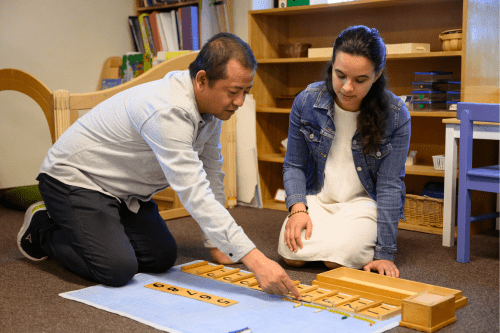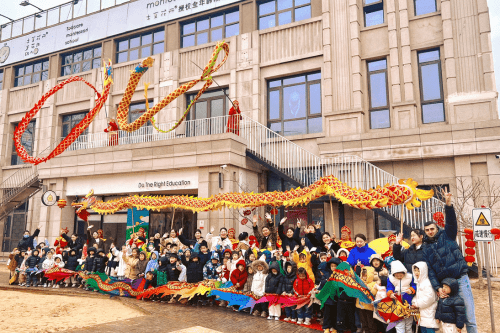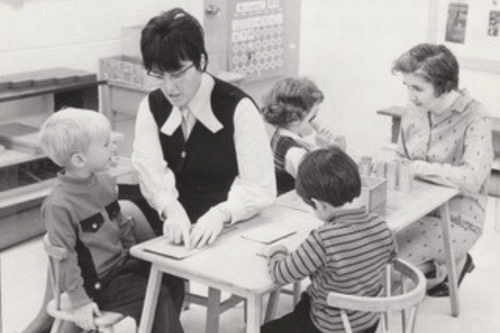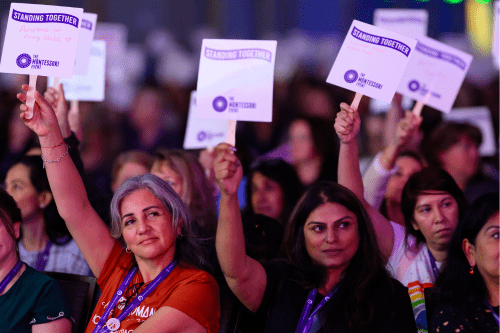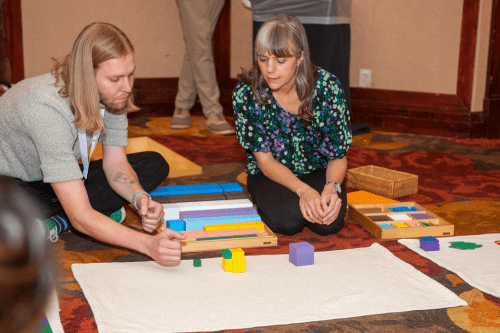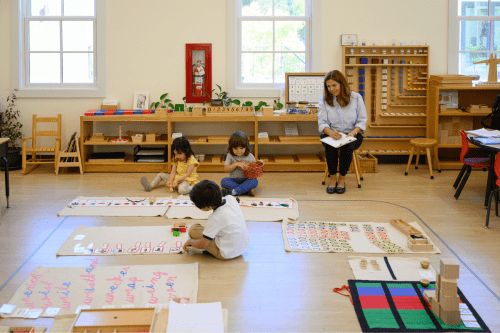Graphic Facilitation: How a Live Sketch Artist Showcased the Voices of Participants at The Montessori Event 2023
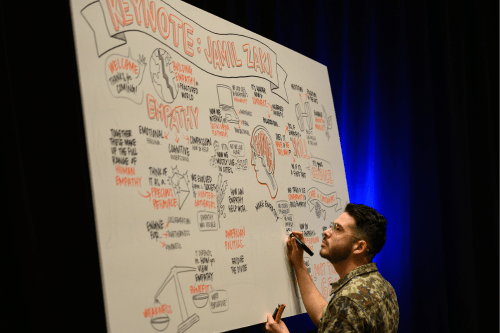
Graphic facilitation is an artistic process that has been around forever. Children often enjoy drawing pictures of all the exciting ideas swirling around in their brains. Students create visual mind maps instead of writing notes. This creative nature is something that is innate within everyone—graphic facilitation just brings it to the forefront.
Given the immense benefits of this unique tool and the crossover with Montessori philosophy, the American Montessori Society was eager to incorporate graphic facilitation at The Montessori Event 2023 in Boston to foster engagement, connection, and community amongst presenters and attendees.

Mike Petitto, graphic facilitator with Collective Next, then attended several keynote presentations at The Montessori Event, creating visual reflections of the conversations during the “event support” phase. This is where the magic of graphic facilitation really comes to life! Meeting attendees find themselves so enamored by the “performance,” engaging with the content of the presentation in a new and exciting way as the main ideas being presented are captured visually in real-time.
Finally, in the “post work” phase, Collective Next finalizes the graphic facilitation output and sends it to their client. Petitto did just that, providing AMS with a physical artifact commemorating The Event that could be shared with the Montessori community.
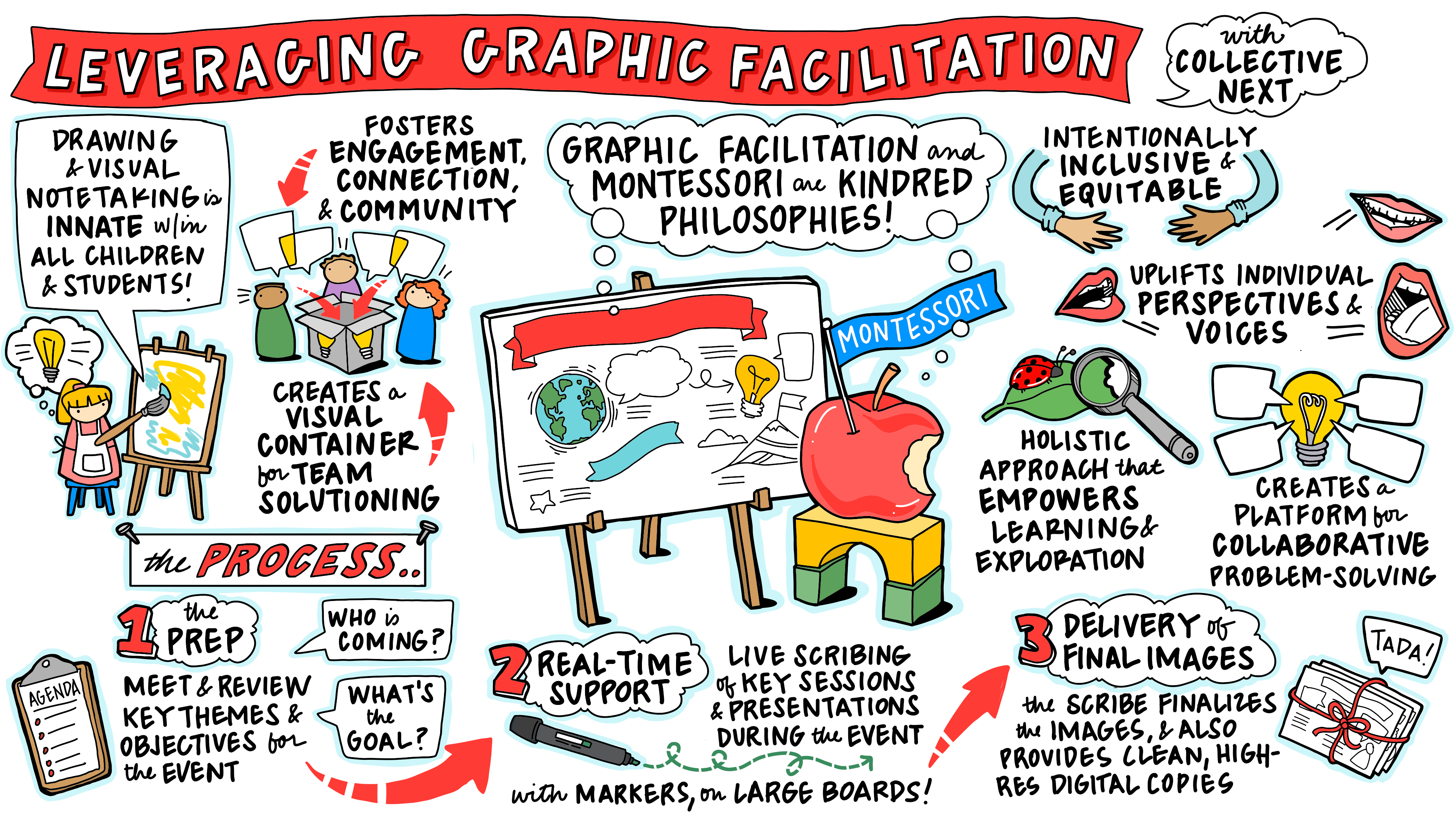
The mission and vision of Collective Next and graphic facilitation aligns closely with Montessori, making it a perfect way to showcase the voices of participants at The Montessori Event. This same approach can be recognized in Montessori classrooms when efforts are made to prepare environments in such a way as to ensure all members feel included and represented equally. Montessori administrators and guides develop systems that lift individual staff and student voices, showcasing different perspectives and experiences as school and classroom communities work together as one. Community meetings offer individual students and staff members opportunities to share their perspectives while the entire group is provided a platform within which they can work collaboratively to solve problems and share their collective voices.
Graphic facilitation also operates in this way, creating the container for teams to develop solutions. Similarly, Montessori guides also prepare the environment and engage the students in a way that empowers them to learn and explore. In fact, Collective Next Graphic Facilitator, Jess Beasley, even notes that an important step of the graphic facilitation process is considering what tools should be provided to participants in order to help them be successful. Other components of the prep work include reflecting on the context of the meeting, developing an understanding of the goal of the conversation, and clarifying the team’s objectives to ensure the conversation is reflected appropriately. This entire process bears much resemblance to the process of the Montessori guide observing students’ needs, preparing the environment, and observing once again in order to determine where and when their guidance and support might be needed.
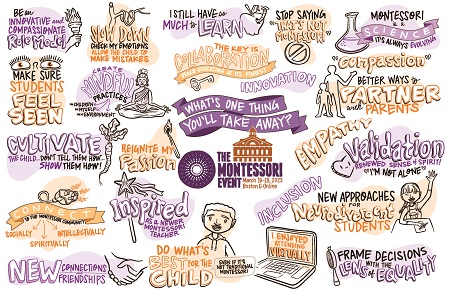
When asked to describe the experience of engaging in live graphic facilitation, Petitto shared, “My job is to make a visual record of the content that is easy to understand and fun to look at. I listen in real time and synthesize the key points to write on the board. I create a mind-map by connecting ideas with arrows or word bubbles. And while I’m listening for more key points, I start to illustrate around the notes I’ve already captured.” He added, “It’s like running. After a few minutes, I settle into a comfortable and calm rhythm. My mind is focused, and before I know it, I’ve filled the board and the presentation is over.”
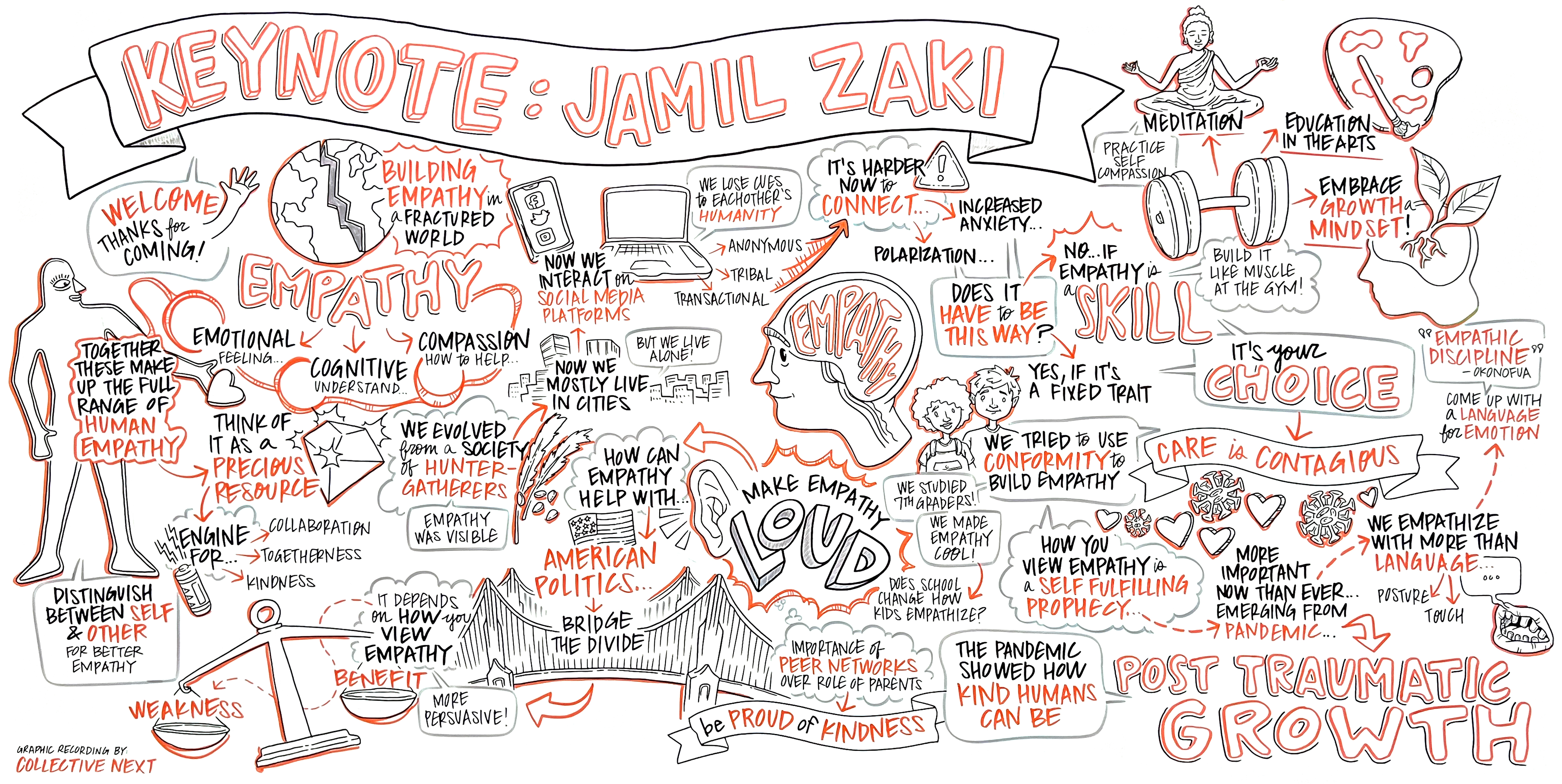
Graphic facilitation is a useful tool anytime people come together to have an important dialogue. It elevates individual voices, ensuring all members of an organization feel included as they work together as a team to make connections, synthesize ideas, and solve problems. Graphic facilitation is a learning and collaboration tool that showcases the voice of a community.
With the help of the incredibly talented team at Collective Next, the individual and collective voices of our community at The Montessori Event have been showcased in an intricate and imaginative way. The illustrations created will forever remain cherished artifacts memorializing this inspirational time spent together learning and growing as a Montessori community.

|
Heather White, EdS, is a Montessori coach and consultant, content creator, and educator for adult learners, as well as a moderator and manager for the Montessori at Home (0 – 3 years) Facebook group. Formerly, she was a Montessori teacher, in-home caregiver, Lower Elementary coordinator, and associate head of school. She also has experience as a school psychologist intern. She is AMS-credentialed (Early Childhood, Elementary I) and is a Nationally Certified School Psychologist (NCSP). Contact her at hpratt@stetson.edu. |
Interested in writing a guest post for our blog? Let us know!
The opinions expressed in Montessori Life are those of the authors and do not necessarily represent the position of AMS.

